Art Fairs
7 Breakthrough Artists to Discover at the 2018 AIPAD Photography Show
Highlights include a series of 1,000 adorable Japanese school girls and daguerreotypes on leaves.
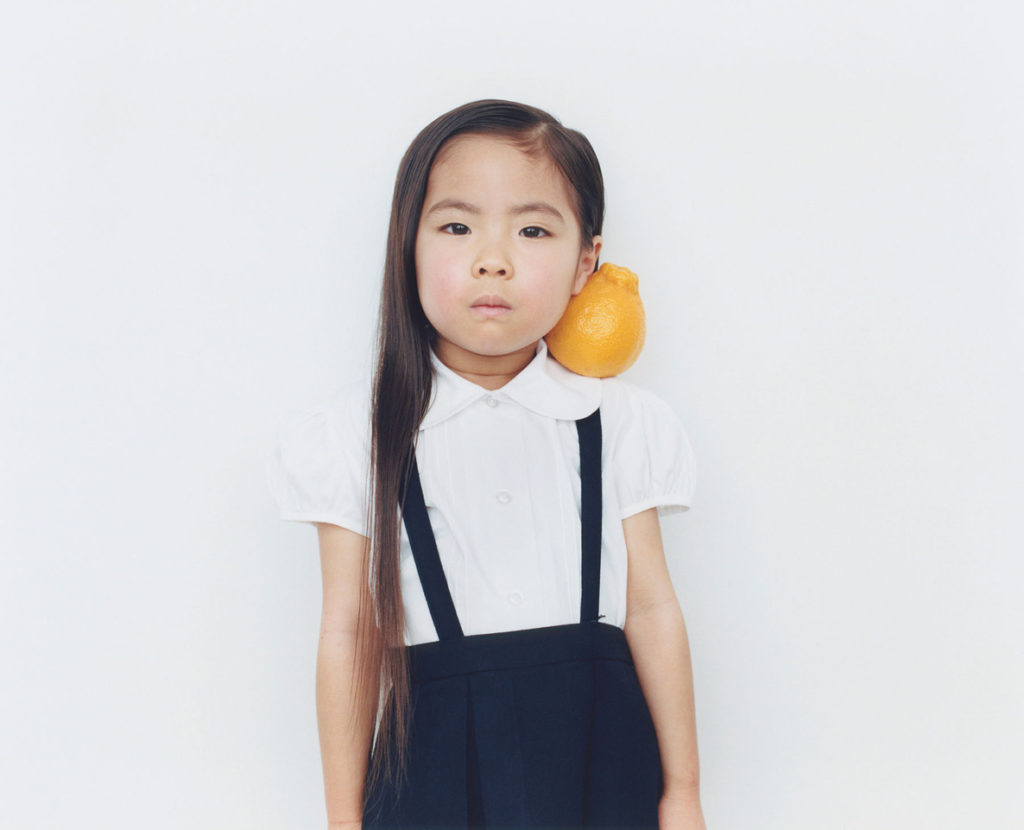
Highlights include a series of 1,000 adorable Japanese school girls and daguerreotypes on leaves.

Sarah Cascone &
Taylor Dafoe

Less than a month after art lovers trekked through the snow to New York’s far West Side for the Armory Show, it’s time for another trip to Pier 94 for the AIPAD Photography Show. From emerging artists to 19th-century pioneers of the medium, the Association of International Photography Dealers fair covers the full range of photographic history. Since that can feel a bit overwhelming, here’s a guide to a few of the top contemporary names you might not know—but should.
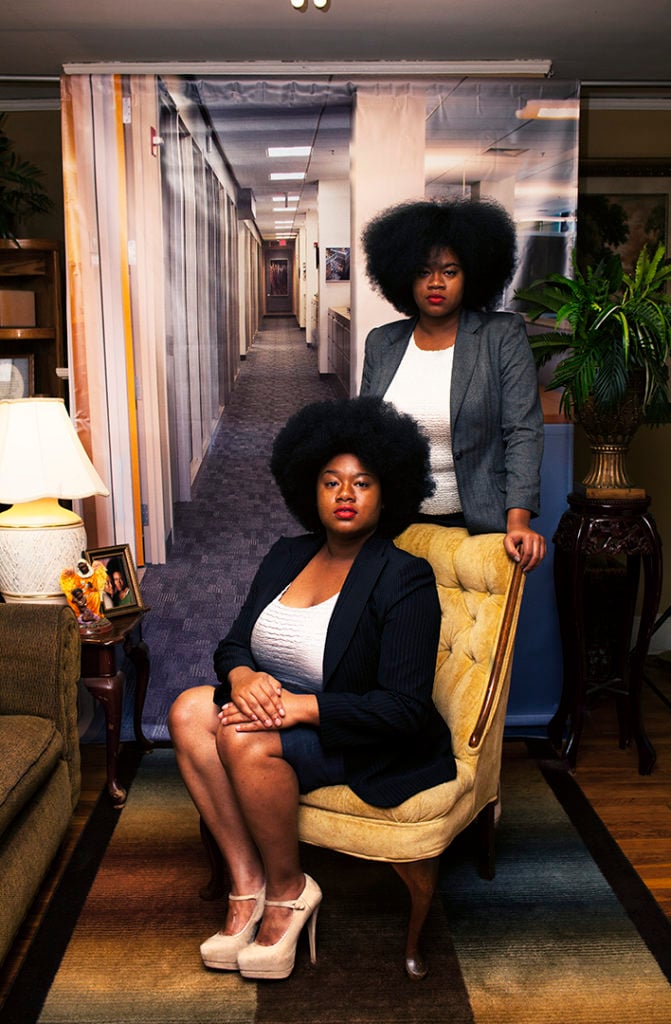
Endia Beal, Sabrina and Katrina (2015). Courtesy of the artist.
Endia Beal’s series of portraits “Am I What You’re Looking For?” features young black women dressed in office attire. Each subject stands in a living room, in front of a printed backdrop of a generic workplace—a reflection on how the boilerplate aesthetics of corporate America are biased against women of color.
Beal’s photos are included in AIPAD’s special exhibition “All Power: Visual Legacies of the Black Panther Party.” Curated by Michelle Dunn Marsh, the exhibition looks at how artists have been influenced by the iconography of the Black Panther Party. At first glance, Beal’s work may not seem like it belongs in a show about the Black Panthers, but the curator points out that this is a product of our misunderstanding of the party.
“If you ask you people what the first three things that come to mind are when you mention Black Panthers, they’re likely to say leather jackets, berets, and guns,” says Dunn Marsh. “They’re not going to say after-school programs, free medical clinics, food banks, or neighborhood safety patrols, but all of those things are part of the legacy of the party. The challenge is that the primary mainstream audience is not particularly well-informed about the totality of that history.”
“Beal’s work, dealing with issues of fair employment, directly connects to the second point of the Black Panther’s 10 platform program.”
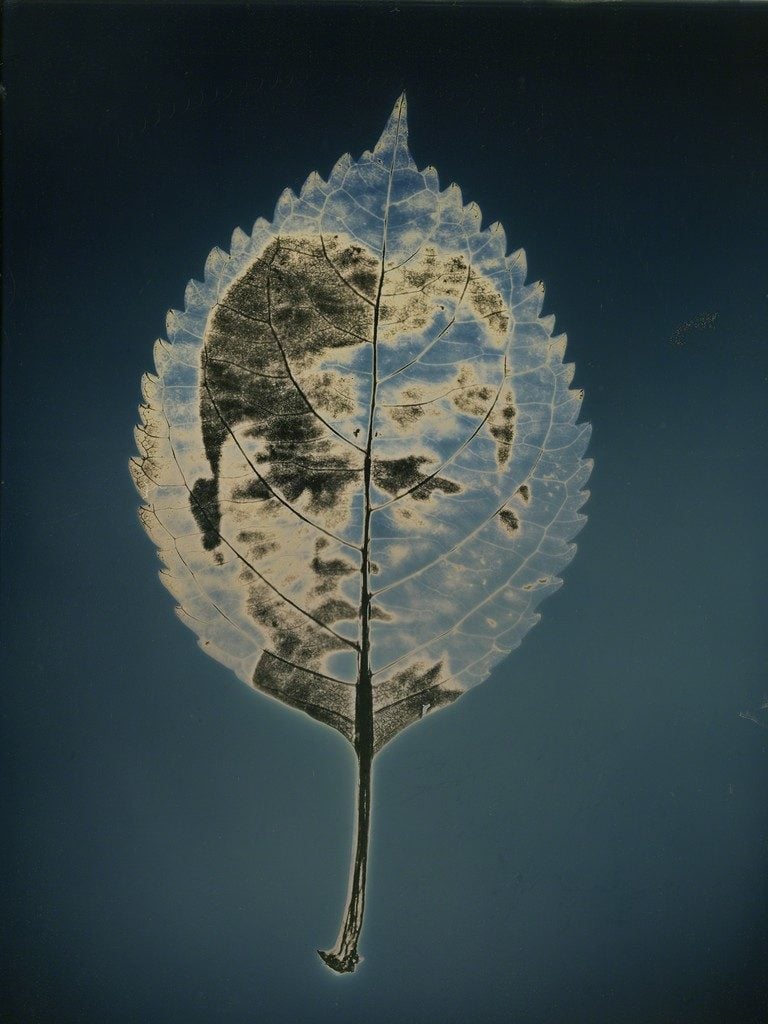
Binh Danh, Untitled #1, from the series “Aura of Botanical Specimen” (2017). Courtesy of Lisa Sette Gallery.
Drawing on his Vietnamese and Cambodian heritage, Binh Danh honors the victims of the Khmer Rouge in his work, reproducing chilling portraits taken of people on their way to their execution. In an earlier body of work, he channeled the power of photosynthesis to develop these images directly onto leaves using chlorophyll.
Danh has gone one step further with his “Aura of Botanical Specimen” series, making photograms of the leaves on daguerreotypes. “You will see the leaf and the portrait, and you will see your own face overlaying the victim,” said the artist in a statement.
“He’s always done really experimental things and now he’s working with daguerreotype in a really contemporary way,” gallery director Ashley Anderson told artnet News. The works cost $4,300–16,000.
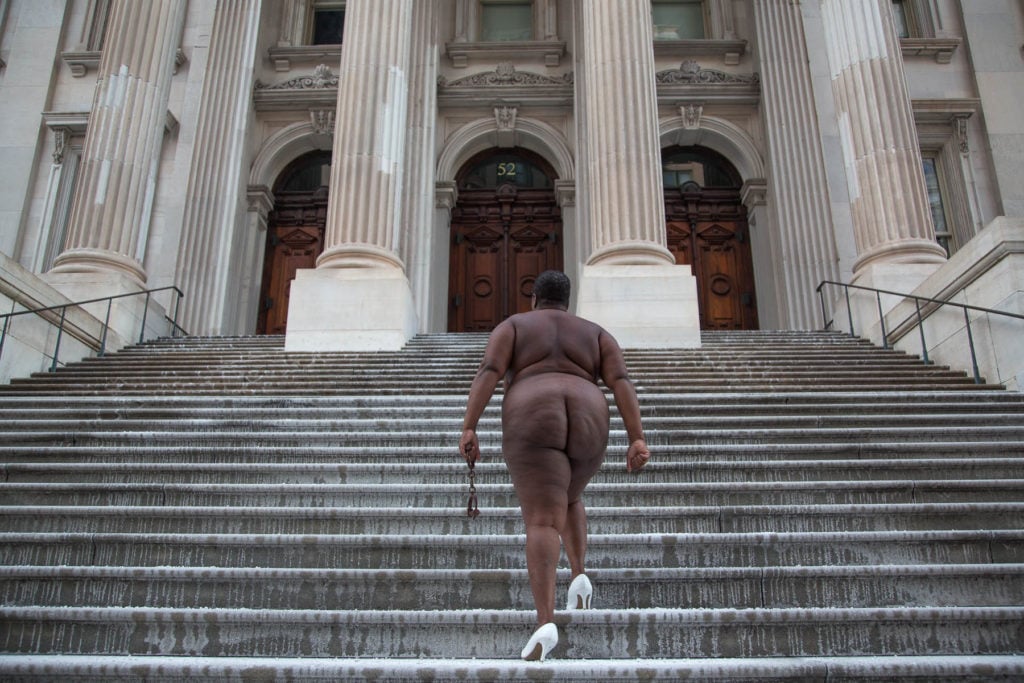
Nona Faustine, Over Her Dead Body, Tweed Courthouse, Brooklyn, NY, 2013. Photo courtesy of Steven Kasher Gallery.
Boldly shining a spotlight on New York City’s forgotten history of slavery, Nona Faustine has photographed herself, naked except for white heels, in front of historic sites linked to the slave trade. The images went viral in 2015, but Steven Kasher is looking for a different sort of interest at AIPAD.
The gallery has given Nona Faustine prime real estate in their booth, with an outer wall of her own, opposite the work of Latoya Ruby Frazier. Faustine’s Over Her Dead Body is priced at $6,500, and the work’s juxtaposition with that of a more established artist exploring similar themes is intentional.
“Individual collectors have been purchasing Nona’s work for some time, but now she’s starting to get more institutional attention,” gallery director Cassandra Johnson told artnet News. “Our goal is to sell a complete set of the ‘White Shoes’ series to a museum.”
“Nona’s work is really brave and really compelling,” she added. “It really stops you in your tracks.”
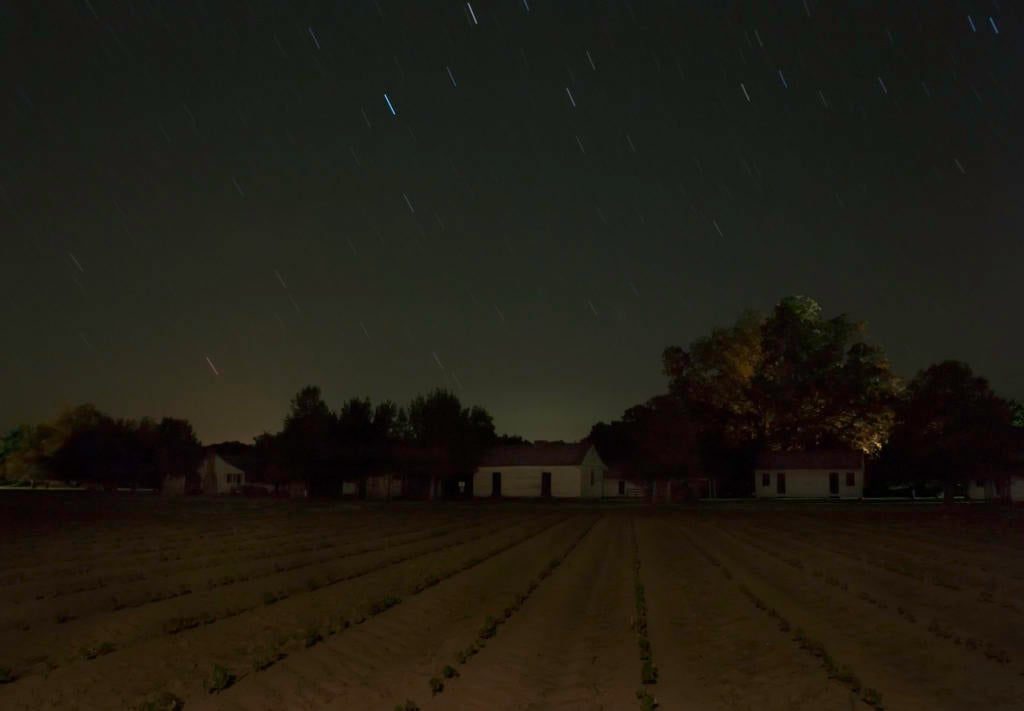
Jeanine Michna-Bales, Stopover, Frogmore Plantation, Concordia Parish, Louisiana, 2014. Photo courtesy of Arnika Dawkins Gallery.
Arnika Dawkins has dedicated her entire booth to the dark, vaguely foreboding images of Jeanine Michna-Bates’s “Through Darkness to Light” series. Each of the 81 photographs was taken at a stop along the Underground Railroad, a secret network dedicated to aiding escaped slaves in their journey north.
“I grew up in Indiana, and the Underground Railroad was part of local lore because there were sites around us,” the artist told artnet News. “I wondered what it would have looked like to go on this journey.”
The product of a decade of research—the project started in 2004 and was completed in 2016—Michna-Bales followed a 1,400-mile route from Louisiana to Ontario, shooting at night, when runaways would have been on the move. Depicting safe houses, backwater swamps, and dimly lit forests, the photographs (priced at $2,800) fire the imagination and the sense of pursuit becomes almost palpable as one loses oneself in the inky black images.
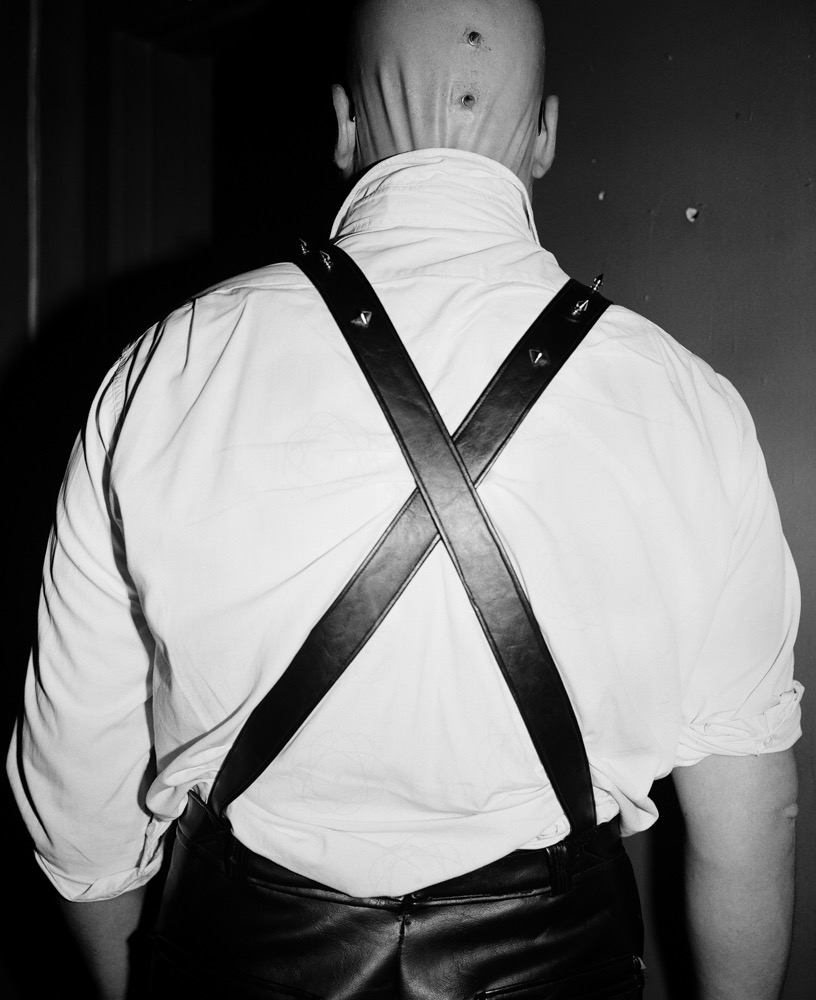
Mimi Plumb, Neil at the Oasis (1986). Courtesy of Jenkins Johnson Gallery.
Mimi Plumb’s photo series “Dark Days” was first created in the early 1980s when the artist was in grad school at the San Francisco Art Institute, but it didn’t see the light of day until more than 30 years later. Plumb revisited the work in 2015 when she retired from teaching, and found that the issues she was grappling with then were startlingly relevant once more.
“Mimi’s ‘Dark Days’ series continues to be relevant today because it forces us to realize how little has changed since she first photographed these moments,” says gallerist Karen Jenkins-Johnson. “The 1980s were a dark period in American history, plagued by hyperinflation, the AIDS epidemic, the Gulf War, an under-performing stock market, and the election of a former movie star as president. Today, global warming, a war in the Middle East, and the election of a reality TV star to the presidency have all contributed to a feeling of discomfort and unease, characteristic of the social and political climate from thirty years ago.”
From a group of onlookers watching a fireworks display to a woman clutching a bottle of beer, the majority of the subjects in Plumb’s stark, black-and-white photos are shot from behind. Their faces are rarely shown, imbuing the series with a foreboding sense of mystery.
Plumb’s contemporary prints start at $3,600, while her vintage prints begin at $6,800. Select photographs from “Dark Days” will be included in Plumb’s forthcoming book, Landfall, which will be published this summer by TBW Books.
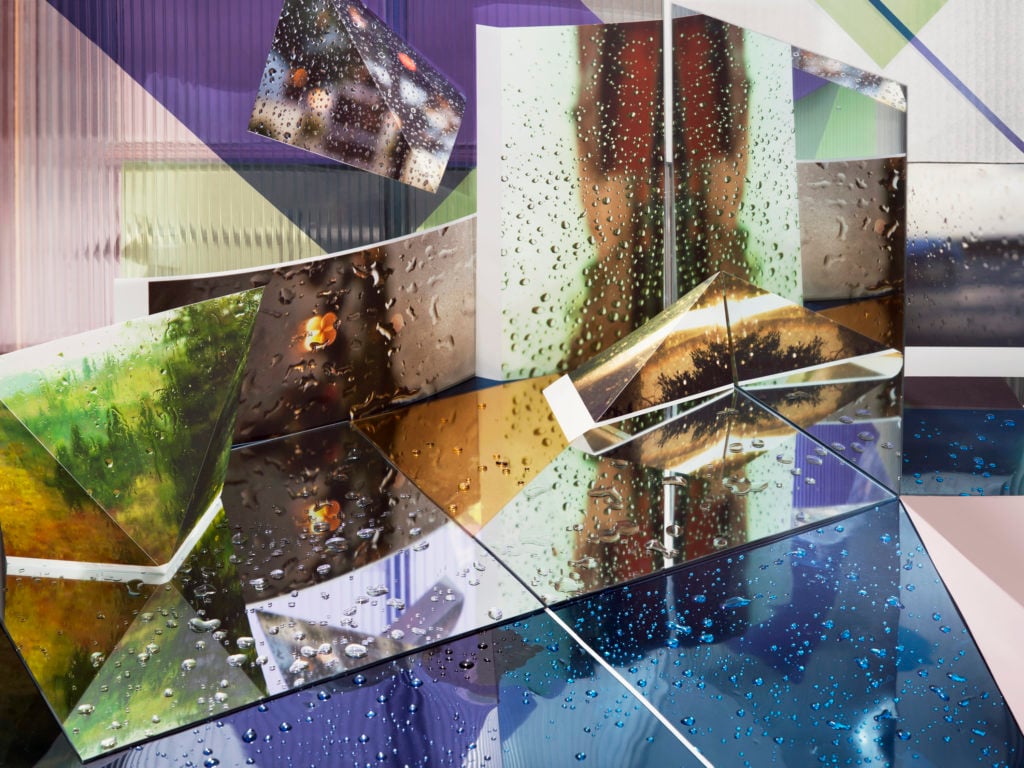
Ana Samoylova, Rainy Windows (2013). © Ana Samoylova. Courtesy of Julie Saul Gallery, New York.
Ana Samoylova’s photographs might elicit more double takes than any other works in the fair. With their formal complexity and perspectival playfulness, it takes a moment to understand how exactly they operate. Found images—from stock photos to shots by iconic artists—comprise the majority of Samoylova’s subject matter, which she re-photographs in elaborate arrangements. In Rainy Windows (2013), dozens of fragmented photographs of raindrops on windows are folded and propped up alongside interlocking pieces of mirrors. In three other works—all from the artist’s “Breakfast With” series—Samoylova photographs breakfast foods atop pictures from books by Stephen Shore, Irving Penn, and Horst P Horst.
This is Samoylova’s first time showing with Julie Saul, having just joined the gallery’s roster in February. She was recommended to the dealer by Brea Souders, a fellow photographer who also has work on view at the fair (and could have been included in this list). “When an artist you respect recommends an artist for you to look at, you pay attention,” says Saul. “Samoylova’s work has a wonderful combination of postmodern and art-historical ideas, and a beautiful, complex way of implementing them.”
Samoylova’s prints range in price from $2,000-4,000.
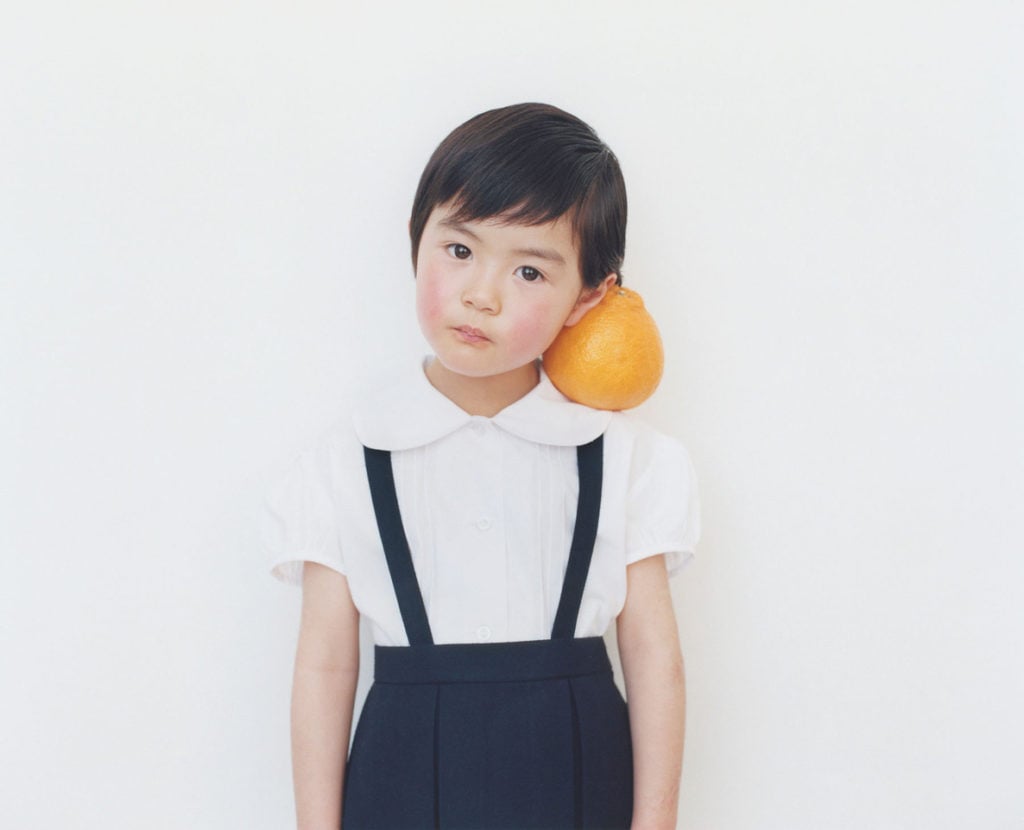
Osamu Yokonami’s captivating “1,000 Children” series of diminutive portraits of tiny, uniformed Japanese school girls posing with local fruits was originally inspired by a commercial assignment.
“Individually, every little difference is so obvious, but as a group they look so uniform,” said gallerist Shelley De Soto.
The photographs, shot between 2010 and 2013, features ten groups of 100 girls, all between the ages of three and five. Currently, the artist is tracking down his subjects for a follow-up project, and has been photographing them again alongside the image of their younger selves, before they were fully aware of the difference between their public and private personas.
Individual framed portraits are $240, or you can get larger prints of 100 girls ($3,000) or the full set of 1,000 ($10,000).